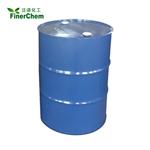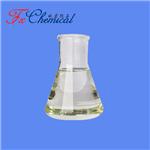The grape scent compound Methyl anthranilate
May 29,2024
Description
Methyl anthranilate is a benzoate ester that is the methyl ester of anthranilic acid. It has a role as a metabolite and a flavoring agent and is functionally related to an anthranilic acid. Methyl anthranilate is a natural product found in Camellia sinensis, Citrus reticulata.

Methyl anthranilate has critical industrial applications as a bird and goose repellent for crop protection, as an oxidation inhibitor or a sunscreen agent, and as an intermediate for the synthesis of a wide range of chemicals, dyes, and pharmaceuticals.
Bird repellent
Methyl anthranilate (CAS 134-20-3; MANT) was first described as a bird repellent by Kare. Since that time, a series of studies have focused on its efficacy as a non-lethal avian irritant. In the field, methyl and dimethyl anthranilate have proved effective in reducing bird depredations of feed at cattle feedlots. It also has the potential to be used to protect orchard crops and seeds. Formulated methy1 anthranilate can minimize goose grazing damage to turf and protect birds when included in granular pesticides. Furthermore, methyl anthranilate incorporated into 'Concover' dissuades gulls from using landfills[1].
This compound can reduce the water consumption of ducks, gulls, and passerines. Without access to fresh, free-standing water at airports, the risk of air collisions between aircraft and birds can potentially be reduced. Decreasing the attractiveness of contaminated water(e.g., cyanide ponds associated with gold-mining operations) may reduce the risk of accidental kills of birds attaining ponds.
Perfumery
MANT, which gives grape scent and flavor, has been extensively used in flavoring foods (e.g., candy, chewing gum, soft drinks, alcoholic drinks, etc.) and drugs (as a flavor enhancer and/or mask). Due to its pleasant aroma, MANT is important in perfumes and cosmetics. It is extensively used in many types of floral blends, such as neroli and orange blossom, as well as in exotic compositions, gardenia, tuberose, and jasmine; Methyl Anthranilate Extra imparts warmth, volume, and sweetness and is used in all types of perfumery[2].
References
[1] Larry Clark. “Acute toxicity of the bird repellent, methyl anthranilate, to fry of Salmo salar, Oncorhynus mykiss, Ictalurus punctatus and Lepomis macrochirus.” Pest Management Science 39 4 (1993): 313–317.
[2] Zi Wei Luo, Sang Yup Lee, Jae Sung Cho. “Microbial production of methyl anthranilate, a grape flavor compound.” Proceedings of the National Academy of Sciences of the United States of America (2019): 10749–10756.
- Related articles
- Related Qustion
- Methyl anthranilate: production and applications Jun 16, 2023
Methyl anthranilate, a natural metabolite with a characteristic grape-like odor, can now be directly produced via microbial fermentation, and shows many potential applications.
- What is Methyl anthranilate? Jan 2, 2020
Methyl anthranilate, also known as MA, methyl 2-aminobenzoate, or carbomethoxyaniline, is an ester of anthranilic acid manufactured through chemical synthesis.
Naphazoline hydrochloride is an imidazole derivative and a direct-acting sympathomimetic amine with vasoconstrictive properties.....
May 29,2024DrugsMolybdenum nitrides also crystallize in a structure similar to γ-Mo2N with an excess of nitrogen in the lattice and with the formula Mo3N2.....
May 29,2024Inorganic chemistryMethyl anthranilate
134-20-3You may like
- The synthesis method of Geraniol
Jul 22, 2024
- Dimethyl phthalate: uses and toxicity
May 7, 2024
- Geranyl acetone: Properties, Production process and Uses
Mar 6, 2024
Methyl anthranilate manufacturers
- Methyl anthranilate
-

- $2.00 / 200KG
- 2024-07-29
- CAS:134-20-3
- Min. Order: 1KG
- Purity: 99%
- Supply Ability: 1000mt/year
- Methyl anthranilate
-

- $10.00 / 1kg
- 2024-07-25
- CAS:134-20-3
- Min. Order: 1kg
- Purity: 99%
- Supply Ability: 1000 tons
- Methyl anthranilate
-

- $0.00 / 1KG
- 2024-07-25
- CAS:134-20-3
- Min. Order: 1KG
- Purity: 98%min
- Supply Ability: 30tons/month





